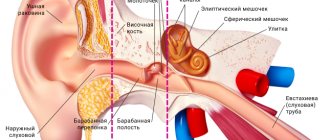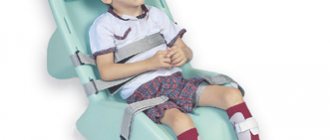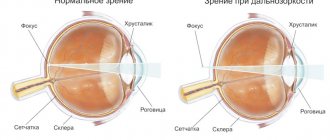Hearing loss is a decrease in hearing, in which it is difficult to communicate with other people. Hearing loss in a child, as a rule, leads to a delay in psycho-speech development, because he learns to speak by imitating what he hears, and “underheard” words lead to speech defects.
The more impaired the hearing, the more severe the delay in psycho-speech development. Therefore, for children with hearing loss it is important for normal development:
- Identify the cause of hearing loss.
- Eliminate or provide a therapeutic effect on the very cause of hearing loss.
- If necessary, choose a hearing aid.
- And also have a comprehensive effect on delayed speech development.
Diagnosis of hearing loss.
To identify hearing loss, children undergo a test called auditory evoked potentials right in the maternity hospital.
However, in this case, only congenital hearing loss is detected. This type of hearing loss develops in a baby if, during pregnancy, his mother suffered from a disease such as influenza, rubella, herpes, or toxoplasmosis. The degree of congenital hearing loss is usually severe, but it is rare in real life. Hereditary hearing loss is also rare. Many children develop hearing loss after birth and are diagnosed at a later stage. For example, at 3-4 years old, when they begin to look for the reason for the delay in speech development in the baby, and it turns out that it is decreased hearing. To determine the degree of hearing loss, children at this age undergo an audiogram. Hearing loss in children is divided into sensorineural hearing loss (a similar term is sensorineural hearing loss ) and conductive hearing loss.
Causes of hearing loss
Conductive hearing loss in a child
Hearing loss is caused by a disruption in the conduction of sound waves—through the ear canal, a damaged eardrum, or inflamed ossicles in the middle ear.
The most harmless cause of conductive hearing loss is cerumen (washed out with saline solution at an appointment with an ENT doctor). But in children, chronic otitis (inflammation of the middle ear) is much more often the cause of conductive hearing loss, and grade 3-4 adenoids, a chronic focus of infection in the nasopharynx and reduced immunity can lead to otitis.
Sensorineural (sensorineural) hearing loss in a child
Hearing loss is caused by damage to the auditory analyzer of the nervous system: damage to the cochlea (organ of hearing) or the auditory nerve, pathways and hearing zones of the brain. The cause of sensorineural hearing loss most often lies in birth trauma, extreme prematurity, hydrocephalus, perinatal pathology, and ischemic damage to the central nervous system. The cochlea (the organ of hearing) often suffers when using ototoxic antibiotics - aminoglycosides (gentamicin, streptomycin, kanamycin, amikacin, monomycin, etc.). In children with hydrocephalus, the conduction pathways usually suffer (demyelination) and the cochlea “hears” sounds, but they do not “reach” the brain through damaged pathways. With hydrocephalus, increased intracranial pressure also puts pressure on the auditory nerve, pathways and hearing areas of the cerebral cortex, preventing their normal functioning. Lack of oxygen during pregnancy and childbirth leads to hypoxic-ischemic damage to the auditory areas in the cerebral cortex. With a birth injury to the cervical spine, the normal flow of blood through the vertebral arteries is disrupted, as a result of which the blood supply to the cochlea and auditory nerve suffers. Many children have mixed hearing loss. That is, during childbirth, the nervous system also suffered and there is, for example, chronic otitis media.
Causes of hearing loss in children
The causes of hearing loss in a child can be congenital or acquired; combinations of various factors are also possible. Let's look at the main causes of hearing loss in children.
Genetics
40% of cases of hearing loss in childhood are due to genetic predisposition. Hearing loss can also be caused by a congenital malformation of the ear or auditory nerve. Pay special attention to your baby's hearing if he was born underweight, experienced oxygen deprivation, was born premature, or suffered from jaundice in the first days after birth.
Infections
If a mother, while pregnant, contracts cytomegalovirus or rubella, this may lead to impaired development of the fetal hearing organ. If a child gets mumps or measles, their hearing may also be affected. Otitis is a particularly dangerous disease in childhood. If you do not treat, for example, a runny nose in a child, the disease can reach the ears and lead to the formation of suppuration and hearing loss. In addition, otitis media is life-threatening.
Improper hygiene
Hearing experts urge everyone to stop using cotton swabs as ear cleaning tools. It is very easy to push the wax deeper into the ear with a stick and even damage the eardrum. Due to the accumulation of large amounts of earwax, cerumen plugs are formed, which block the entry of sound into the middle ear. For proper hygiene, it is enough to regularly wash your ears with warm water.
Noisy environment
Keep children away from noisy places - their already fragile hearing system may not be able to withstand constant noise and may suffer. If your child uses headphones, teach him important rules for using them: the volume should not be louder than 50%, and use of headphones should be limited to one hour a day.
Ototoxic drugs
Some strong medications can disrupt the functioning of the sensory cells in the middle ear. Such drugs are used in the treatment of complex diseases, such as malaria, tuberculosis and cancer.
Why can't the child hear? – find out the reasons
In the context of this issue, the concepts of “temporary hearing loss” and “hearing loss” should be distinguished. In the first case, difficulties with the perception of sounds are temporary, in the second we are talking about irreversible processes of the entire auditory system.
It all depends on what caused the hearing loss. In both cases, the pathologies are based on causes that can be combined into 2 large groups:
1. Congenital hearing abnormalities that are detected at the time of birth or appear after some time, they cannot be prevented or avoided:
- hereditary predisposition: hearing loss transmitted from generation to generation;
- genetic abnormalities: physiological disorders in the development of the outer, middle or inner ear.
2. Acquired hearing impairment, resulting from damage to a normally formed hearing aid as a result of exposure to negative internal or external factors. These include:
- infections suffered by the mother during pregnancy (flu, herpes), taking toxic drugs (antibiotics), birth pathologies;
- injury to the auditory nerve, cochlea or eardrum (exposure to loud noise, careless ear cleaning, etc.);
- inflammation of the external auditory canal or middle ear (otitis);
- consequences of severe forms of measles, mumps, encephalitis and meningitis;
- proliferation of bone tissue in the cavity of the middle and inner ear;
- cyst-like formation in the middle ear (cholesteatoma);
- blockage of the ear canal with wax;
- fluid accumulated in the middle ear.
Note that children with congenital hearing loss have very poor speech development, since they cannot correctly hear the voices of those around them, including their parents. And this, as you know, is a prerequisite for the successful development of speech in the early stages of a child’s development. Therefore, it is very important to consult a doctor as soon as possible if parents notice hearing problems in their child.
Signs of hearing loss in children
The problem of decreased hearing is most often noticeable not to the hard of hearing person himself, but to those who communicate with him. If a child has hearing loss, it will be noticeable first of all to his parents.
The main sign of hearing loss in a child under one year old is a lack of response to loud sounds. Normally, the child should react (shudder, cry) after two weeks of life; if this does not happen, contact a specialist immediately. Learn more about newborn hearing testing
If hearing loss occurs in a child older than one year, then it is easier to determine. The child does not respond to his name, is poorly oriented in space by sounds, does not hear what is happening in the next room, etc.
Older children drop out of the conversation, answer inappropriately, and also do not respond to their name or to calls from afar. Learn more about hearing testing for children and teenagers
Diagnosis of hearing loss
Hearing restoration is carried out by a doctor - an otorhinolaryngologist. At the first appointment, the doctor will examine the child, ask the parents what symptoms appear in everyday life, and whether the adenoids are bothering them. Then the examination is carried out using several methods:
- audiometric examination - to determine hearing acuity;
- tympanometry - using a tympanometer to study the functions of the elements of the middle ear, as well as the mobility of the eardrum;
- tuning fork research - carried out using special tuning forks;
- studies of evoked potentials - carried out on young children during sleep, if it is impossible to carry out the above studies;
- Ottoacoustic emission - the auditory nerve is stimulated with electrical impulses to test its response;
- if necessary, additional x-ray examinations are prescribed (CT-temporal bones, MRI of the brain, x-ray examination of the temporal bones according to Schüller, Mayer, Stenvers).
Classification of hearing loss
- I degree:
usually the child hears well, but problems begin when he finds himself in a noisy acoustic situation. - Stage II:
There are problems with whispered speech, even if it is heard in a quiet environment. - Grade III:
The child has serious problems understanding speech, even if it is quite loud. - IV degree:
the baby hears only what sounds very close to his ear.
The only thing worse than fourth degree hearing loss is complete deafness.
Please note: hearing loss is not a temporary quantitative decrease in the ability to perceive sounds, but qualitative irreversible changes in the entire auditory system, which will inevitably have an impact on the development of the child’s psyche. The role of hearing in human development is very great.
Degrees of hearing loss
What is considered bad hearing? There are four degrees of hearing loss:
- First degree: a person perceives sounds from 25 to 40 decibels (for comparison, good hearing is the ability to perceive sounds up to 20 decibels). Whispered and distant speech is difficult to perceive, but conversation is perceived well.
- Second degree: the hearing threshold increases to 55 decibels. Whispered speech is perceived at a distance of no more than one meter.
- Third degree: decibel values increase to 70. It becomes impossible for a child to perceive whispered speech. To hear your interlocutor, you need to approach him at a distance of one or two meters.
- Fourth degree: the hearing threshold reaches 90 decibels. It becomes almost impossible to perceive the speech of others.
When the hearing threshold reaches more than 90 decibels, hearing is completely lost. Deafness sets in.
A decrease in a child’s sound perception can begin suddenly: with a sharp decrease in the child’s hearing, pathology develops in just a couple of hours. In acute cases, the child’s hearing deteriorates within one month. Subacute decrease in hearing sensitivity occurs within one to three months. In the chronic course, a decrease in hearing abilities occurred for more than three months.
Make an appointment right now!
Call us by phone or use the feedback form
Sign up
But a decrease in a baby’s ability to distinguish sounds is not a reason to be inactive! It is necessary to contact a competent otolaryngologist at the first signs of hearing loss.
Features of mental development of children with hearing impairments
If you ignore hearing impairment in children at an early age, you may encounter the ensuing problem of underdevelopment of speech and other functions: thinking, memory, attention. This type of development is called deficient.
In general, the mental development of children with hearing impairments follows the same laws as healthy children, but it happens much more slowly due to limited contact with the world around them. Also, the mental activity of a hearing-impaired child seems to be simplified—halftones and half-measures are lost. It is more difficult for a child to connect various phenomena with each other and recognize emotions. Also a distinctive feature is speech impairment in children with hearing impairment.
Child and hearing loss
A decrease in the ability to detect and understand sounds is medically called hearing loss - this is a partial loss of hearing when surrounding sounds are perceived as muffled. Sometimes they can be difficult to make out.
The problem of decreased or absent hearing in childhood is very acute today. The statistics are disappointing: about ten million Russians suffer from a decrease in noise pollution and a decrease in sensitivity to sounds. Moreover, most of the diseases occur in cases of hearing impairment in children. One baby in a thousand is already born with hearing loss or impairment.
As already noted, the decrease or loss of auditory perception in a child can be congenital or acquired.
Based on the location of the pathology, sensorineural, conductive and mixed hearing loss is distinguished. The conductive form is associated with dysfunction of the outer and middle ear. In the sensorineural form, there is a decrease in the function of the auditory receptors of the inner ear. This is the most common type of hearing loss, accounting for about 90% of all cases. If both types of disease are combined, we talk about a mixed form of this pathology.
Features of mental development of children with hearing impairments
The mental development of a child is characterized by the development of his attention, memory and thinking. According to the results of numerous studies, hearing-impaired children experience difficulties in the development of all these indicators.
Features of attention
Children with hearing impairment simultaneously perceive a much smaller number of elements than children with normal hearing. This is especially evident in lessons, when it is necessary, for example, to listen to the teacher and write in a notebook at the same time. It also takes a hearing-impaired child much longer to switch from one type of perception to another, for example, from reading to listening.
Memory Features
Children with normal hearing involuntarily remember a huge number of things through simple contact with the outside world. In a hearing-impaired child, as we remember, such contacts are quite limited, so he remembers much less, although he is capable of the same volumes as a healthy child. Children with hearing impairments are good at remembering words that are closely related to visual images, and things are much worse with words denoting sound or abstract phenomena.
Features of thinking
Due to limited contacts with the world and society, the set of mental tools of a child with hearing loss is not so wide. He often tries to open different doors with one key. A child may have difficulty identifying main and minor details in stories or drawings, or identifying non-obvious cause-and-effect relationships. In general, the development of thought processes will be significantly slowed down.
Teaching children with hearing loss is a challenging task. Both parents and specialists should be involved in solving it in parallel.
Symptoms
Hearing loss may be accompanied by:
- painful sensations in the ear,
- presence of discharge in the ear,
- sensation of fluid transfusion and other noises,
- runny nose,
- nausea and vomiting,
- dizziness,
- nystagmus,
- temperature rise,
- headache,
- weakening of facial muscles,
- gait disturbance (towing to one side, instability).
You should get your hearing checked if you notice the following signs:
- difficult to follow the conversation
- the interlocutor has to repeat words often,
- you get the feeling that the people around you are speaking very quietly,
- in a noisy environment you cannot understand speech (in a park, at a meeting, in a cafe),
- I have to turn up the TV volume,
- there is a ringing in the ears.
At the same time, the patient’s emotional state is tense, he constantly tries to hear what is being said to him and gets irritated with the interlocutor.
Diagnosis of hearing loss in children
Timely diagnosis is the most important step in helping a hearing-impaired child. The sooner you discover the problem and begin to solve it, the faster and easier the child’s adaptation to life in society will be. Don't wait for your child to withdraw into his quiet, lonely world.
There are several methods for determining the hearing status of children.
In Russia, the very first hearing test should be carried out in the maternity hospital. It is called “audio screening” - it is an objective research method that shows the presence of violations. This type of diagnosis can be done even if the baby is sleeping. For older children, the diagnosis should be carried out by a specialist in hearing impairment, ENT, audiologist or audiologist. This can be game or speech audiometry. For children from 12 years of age, it is permissible to conduct pure tone threshold audiometry.









